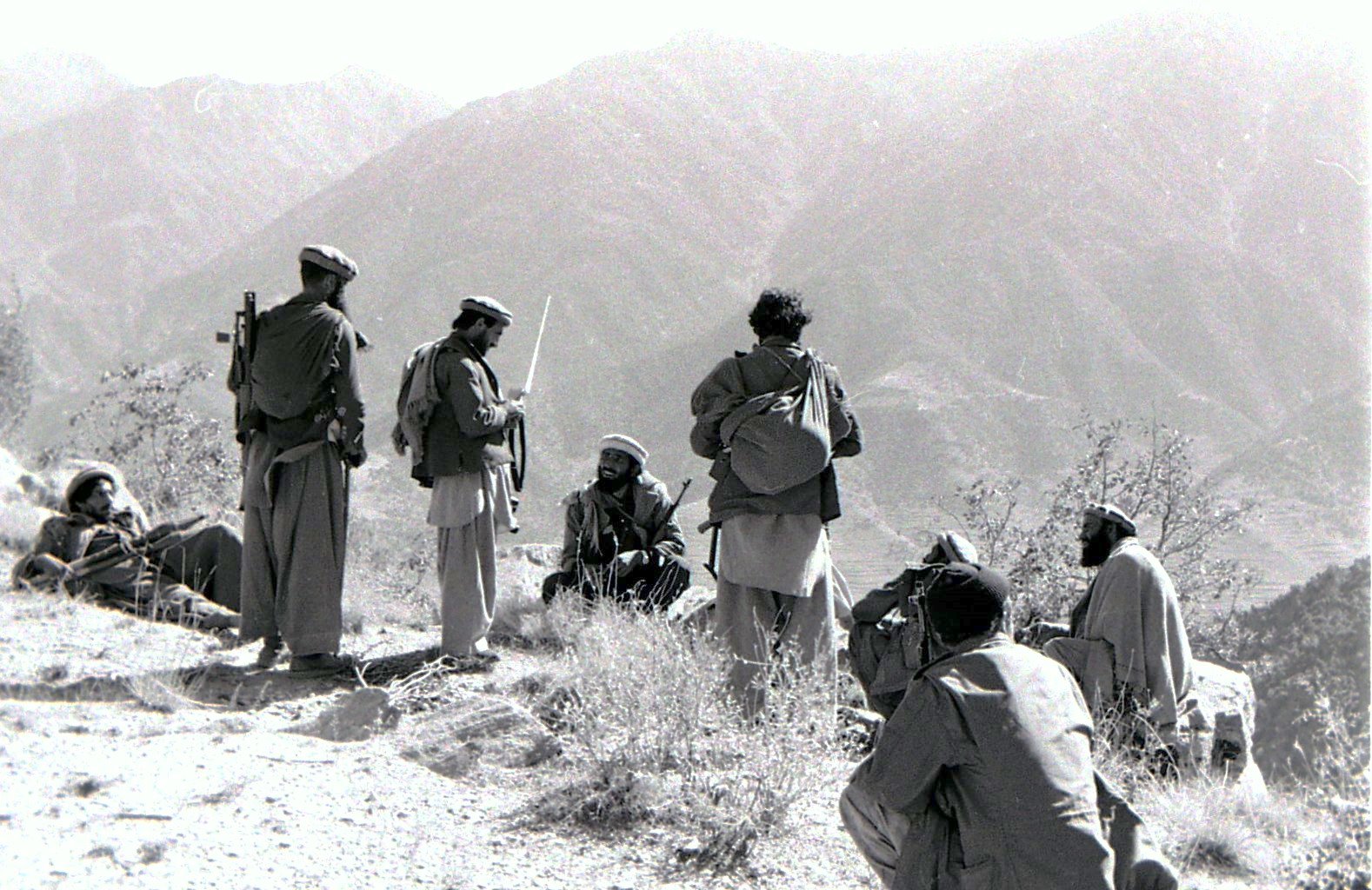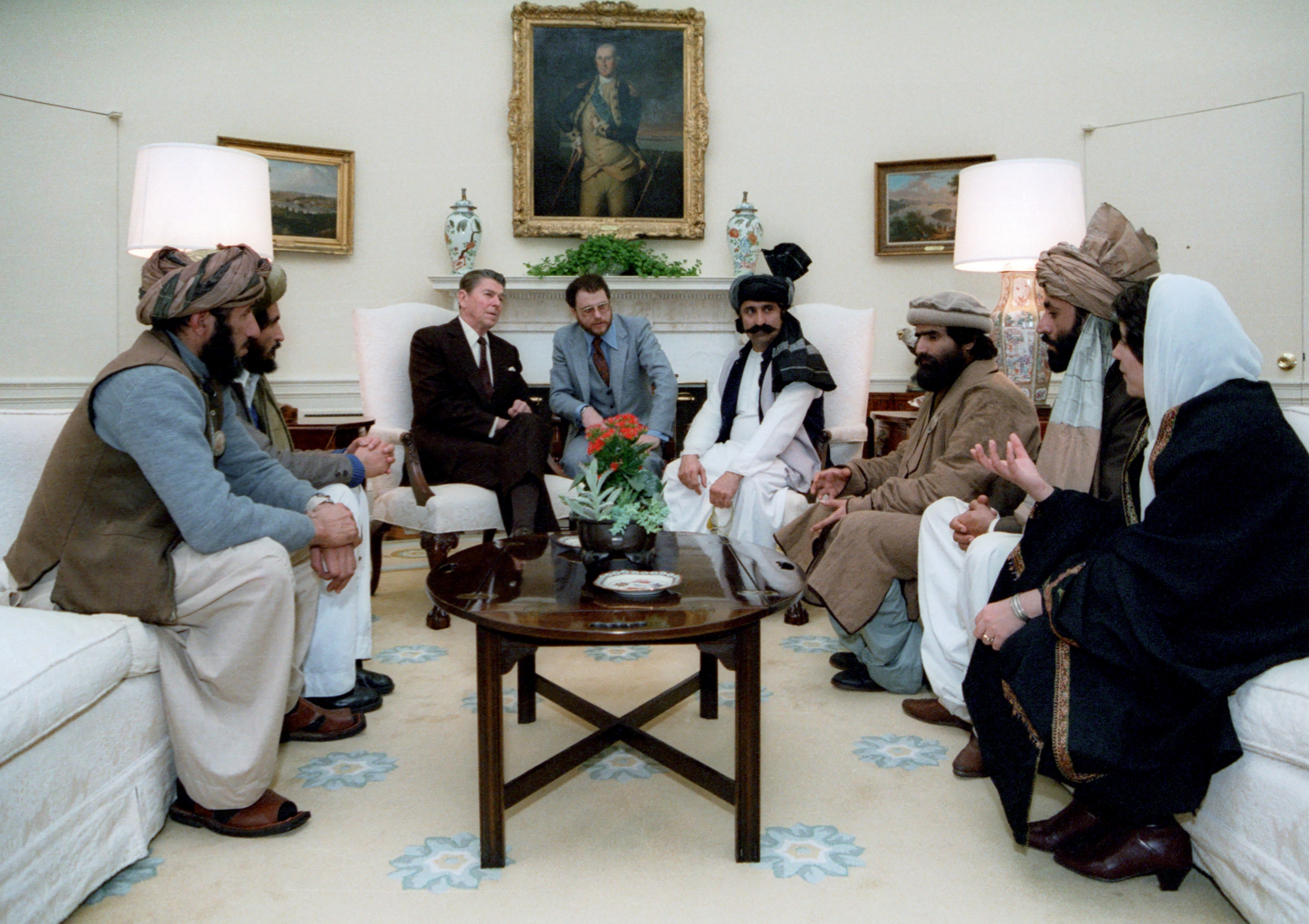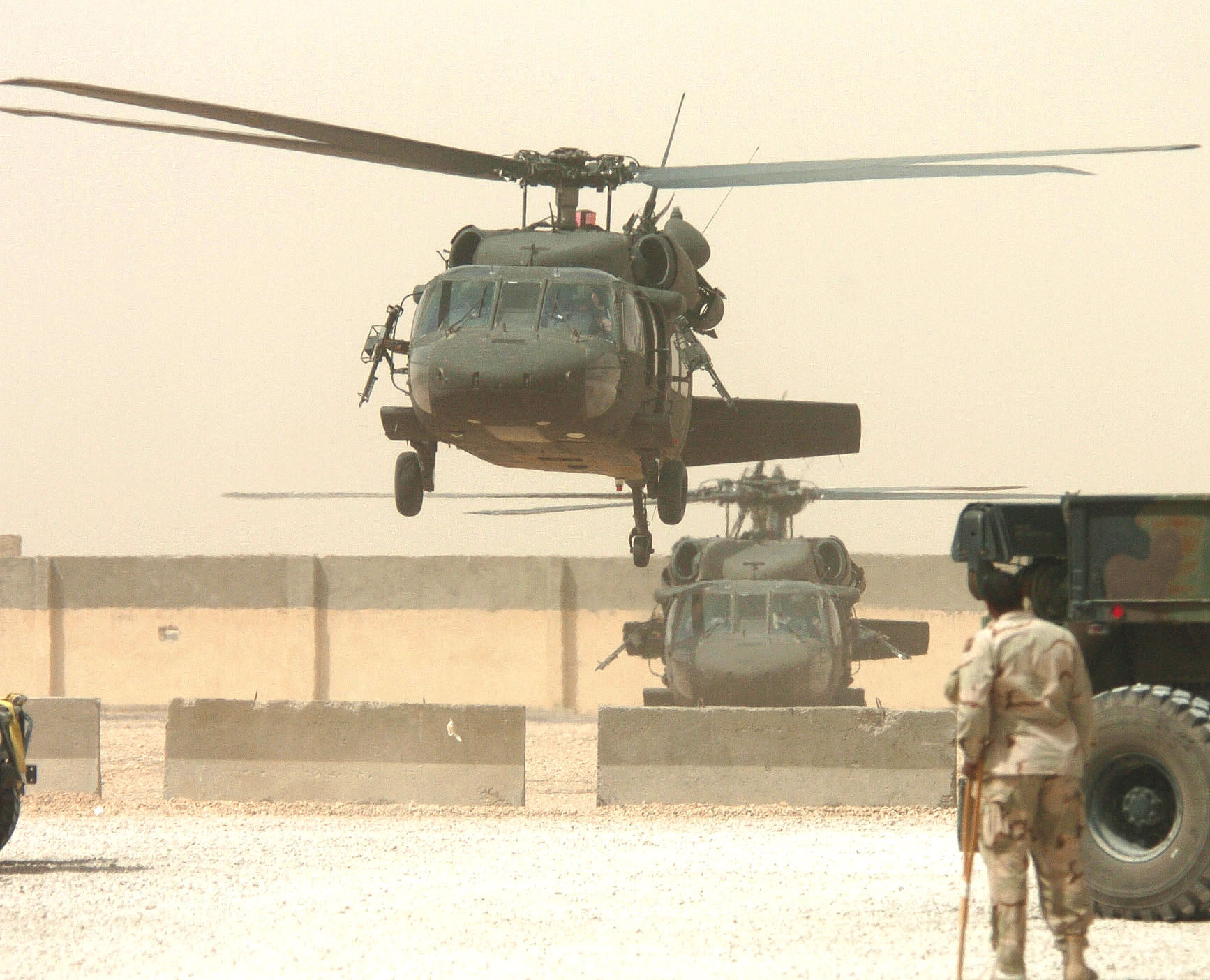|
Kajaki Dam Incident
The Kajaki Dam Incident occurred on the 6 September 2006, when 4 Soviet anti-personnel mines, left over from the Soviet occupation of Afghanistan, were detonated by soldiers of the 3rd Battalion, Parachute Regiment, British Army. One soldier was fatally wounded, and seven others sustained serious injuries during the blasts. Background The troops were based at "Normandy" outpost in Helmand. They were there to protect the Afghan village of Kajaki from the Taliban militant group. Incident In the early hours of the 6th September 2006, Taliban activity was spotted in the form of a checkpoint being set up by armed militants. Corporal Stu Pearson, who was commander of the Normandy outpost, was alerted by Lance Corporal Stewart Hale to the activity, and was informed that Hale could potentially engage the militants with his sniper rifle. However, they had spotted a more suitable vantage point across the dam. As they traversed the landscape towards their vantage point, LCpl Hale stood on an ... [...More Info...] [...Related Items...] OR: [Wikipedia] [Google] [Baidu] |
Soviet–Afghan War
The Soviet–Afghan War was a protracted armed conflict fought in the Democratic Republic of Afghanistan from 1979 to 1989. It saw extensive fighting between the Soviet Union and the Afghan mujahideen (alongside smaller groups of anti-Soviet Maoism, Maoists) after the former militarily intervened in, or launched an invasion of, Afghanistan to support the local pro-Soviet government that had been installed during Operation Storm-333. Most combat operations against the mujahideen took place in the Afghan countryside, as the country's urbanized areas were entirely under Soviet control. While the mujahideen were backed by various countries and organizations, the majority of their support came from Pakistan, Saudi Arabia, the United States, the United Kingdom, China, and Iran; the American pro-mujahideen stance coincided with a sharp increase in bilateral hostilities with the Soviets during the Cold War (1979–1985), Cold War. The conflict led to the deaths of between 562,000 and ... [...More Info...] [...Related Items...] OR: [Wikipedia] [Google] [Baidu] |
3rd Battalion, Parachute Regiment
The 3rd Battalion, Parachute Regiment (3 PARA), is a battalion sized formation of the British Army's Parachute Regiment and is a subordinate unit within 16 Air Assault Brigade. Roled as an Airborne light infantry unit, the battalion is capable of a wide range of operational taskings. Based at Merville Barracks, Colchester Garrison, their barracks in England, personnel regularly deploy outside of the United Kingdom on operations and training. A unique part of the 3rd Battalion is the inclusion of the Guards Parachute Platoon, which is incorporated into B Company and also known as 6 (Guards) Platoon. The Guards Parachute Platoon is made up of volunteers who have passed P Company from the five Regiments of Foot Guards and Infantry qualified members of the Household Cavalry; they can be distinguished from other paratroopers by a "blue red blue" patch sewn to their beret beneath the Parachute Regiment cap badge. History Background Impressed by the success of German airborne opera ... [...More Info...] [...Related Items...] OR: [Wikipedia] [Google] [Baidu] |
British Army
The British Army is the principal land warfare force of the United Kingdom, a part of the British Armed Forces along with the Royal Navy and the Royal Air Force. , the British Army comprises 79,380 regular full-time personnel, 4,090 Gurkhas, and 28,330 volunteer reserve personnel. The modern British Army traces back to 1707, with antecedents in the English Army and Scots Army that were created during the Restoration in 1660. The term ''British Army'' was adopted in 1707 after the Acts of Union between England and Scotland. Members of the British Army swear allegiance to the monarch as their commander-in-chief, but the Bill of Rights of 1689 and Claim of Right Act 1689 require parliamentary consent for the Crown to maintain a peacetime standing army. Therefore, Parliament approves the army by passing an Armed Forces Act at least once every five years. The army is administered by the Ministry of Defence and commanded by the Chief of the General Staff. The Brit ... [...More Info...] [...Related Items...] OR: [Wikipedia] [Google] [Baidu] |
Taliban
The Taliban (; ps, طالبان, ṭālibān, lit=students or 'seekers'), which also refers to itself by its state (polity), state name, the Islamic Emirate of Afghanistan, is a Deobandi Islamic fundamentalism, Islamic fundamentalist, militant Islamism, Islamist, Jihadism, jihadist, and Pashtun nationalism, Pashtun nationalist political movement in Afghanistan. It ruled approximately three-quarters of the country Islamic Emirate of Afghanistan (1996–2001), from 1996 to 2001, before being overthrown following the United States invasion of Afghanistan, United States invasion. It Fall of Kabul (2021), recaptured Kabul on 15 August 2021 after nearly 20 years of Taliban insurgency, insurgency, and currently controls all of the country, although its government has Recognition of the Islamic Emirate of Afghanistan, not yet been recognized by any country. The Taliban government has been criticized for restricting human rights in Afghanistan, including the right of women in Afgh ... [...More Info...] [...Related Items...] OR: [Wikipedia] [Google] [Baidu] |
Mortar Shell
A mortar is usually a simple, lightweight, man-portable, muzzle-loaded weapon, consisting of a smooth-bore (although some models use a rifled barrel) metal tube fixed to a base plate (to spread out the recoil) with a lightweight bipod mount and a sight. They launch explosive shells (technically called bombs) in high-arcing ballistic trajectories. Mortars are typically used as indirect fire weapons for close fire support with a variety of ammunition. History Mortars have been used for hundreds of years. The earliest mortars were used in Korea in a 1413 naval battle when Korean gunsmiths developed the ''wan'gu'' (gourd-shaped mortar) (완구, 碗口). The earliest version of the ''wan'gu'' dates back to 1407. Choi Hae-san (최해산, 崔海山) (1380–1443), the son of Choe Mu-seon (최무선, 崔茂宣) (1325–1395), is generally credited with inventing the ''wan'gu''. In the Ming dynasty, general Qi Jiguang recorded the use of a mini cannon called the Hu dun pao that was simi ... [...More Info...] [...Related Items...] OR: [Wikipedia] [Google] [Baidu] |
Tourniquet
A tourniquet is a device that is used to apply pressure to a limb or extremity in order to stop the flow of blood. It may be used in emergencies, in surgery, or in post-operative rehabilitation. A simple tourniquet can be made from a stick and a rope, but the use of makeshift tourniquets has been reduced over time due to their ineffectiveness compared to a commercial and professional tourniquet. This may stem the flow of blood, but side effects such as soft tissue damage and nerve damage may occur. Types There are three types of tourniquets: surgical tourniquets, emergency tourniquets, and rehabilitation tourniquets. Surgical tourniquets Silicone ring tourniquets, or elastic ring tourniquets, are self-contained mechanical devices that do not require any electricity, wires or tubes. The tourniquet comes in a variety of sizes. To determine the correct product size, the patient's limb circumference at the desired occlusion location should be measured, as well as their bloo ... [...More Info...] [...Related Items...] OR: [Wikipedia] [Google] [Baidu] |
UH-60 Black Hawk
The Sikorsky UH-60 Black Hawk is a four-blade, twin-engine, medium-lift utility military helicopter manufactured by Sikorsky Aircraft. Sikorsky submitted the S-70 design for the United States Army's Utility Tactical Transport Aircraft System (UTTAS) competition in 1972. The Army designated the prototype as the ''YUH-60A'' and selected the Black Hawk as the winner of the program in 1976, after a fly-off competition with the Boeing Vertol YUH-61. Named after the Native American war leader Black Hawk, the UH-60A entered service with the U.S. Army in 1979, to replace the Bell UH-1 Iroquois as the Army's tactical transport helicopter. This was followed by the fielding of electronic warfare and special operations variants of the Black Hawk. Improved UH-60L and UH-60M utility variants have also been developed. Modified versions have also been developed for the U.S. Navy, Air Force, and Coast Guard. In addition to U.S. Army use, the UH-60 family has been exported to several nations. ... [...More Info...] [...Related Items...] OR: [Wikipedia] [Google] [Baidu] |
Mark Wright (British Army Soldier)
Mark William Wright, GC (22 April 1979 – 6 September 2006) was a soldier in the British Army and a recipient of the George Cross. He died in Helmand Province, Afghanistan, after entering a minefield in an attempt to save the lives of other injured soldiers. His actions were posthumously recognised with the award of the George Cross on 14 December 2006,Operational Honours: VC and GC for acts of exceptional valour , MOD press release, 14 December 2006. and the next day. Wright had served in the |
Black Hawk Helicopter
The Sikorsky UH-60 Black Hawk is a four-blade, twin-engine, medium-lift utility military helicopter manufactured by Sikorsky Aircraft. Sikorsky submitted the S-70 design for the United States Army's Utility Tactical Transport Aircraft System (UTTAS) competition in 1972. The Army designated the prototype as the ''YUH-60A'' and selected the Black Hawk as the winner of the program in 1976, after a fly-off competition with the Boeing Vertol YUH-61. Named after the Native American war leader Black Hawk, the UH-60A entered service with the U.S. Army in 1979, to replace the Bell UH-1 Iroquois as the Army's tactical transport helicopter. This was followed by the fielding of electronic warfare and special operations variants of the Black Hawk. Improved UH-60L and UH-60M utility variants have also been developed. Modified versions have also been developed for the U.S. Navy, Air Force, and Coast Guard. In addition to U.S. Army use, the UH-60 family has been exported to several nations. Bl ... [...More Info...] [...Related Items...] OR: [Wikipedia] [Google] [Baidu] |
Kajaki (film)
''Kajaki: The True Story'', released in North America as ''Kilo Two Bravo'', is a 2014 British war docu-drama film directed by Paul Katis in his feature debut, written by Tom Williams, and produced by Katis and Andrew de Lotbiniere. The plot is based on the Kajaki Dam incident, involving Mark Wright and a small unit of British soldiers positioned near the Kajaki Dam, in Helmand province, Afghanistan. Cast * David Elliot as Mark Wright * Mark Stanley as Tug * Scott Kyle as Stu Pearson * Benjamin O'Mahony as Stuart Hale * Bryan Parry as Jonesy * Liam Ainsworth as Ken Barlow * Ali Cook as Spud McMellon * Andy Gibbins as Smudge * Grant Kilburn as Alex Craig * John Doughty as Dave Prosser * Jon-Paul Bell as Luke Mauro * Malachi Kirby as Snoop * Paul Luebke as Jay Davis * Ryan W. Sadi as Kyle Minchew * Robert Mitchell as Faz * Thomas Davison as Jarhead * Abe Dababneh as Kajaki Jon * Felipe Cabezas as Kajaki Mike * Hazem Alagha as Steven "Bombhead" Watson Production The film w ... [...More Info...] [...Related Items...] OR: [Wikipedia] [Google] [Baidu] |
Helmand Province
Helmand (Pashto/Dari: ; ), also known as Hillmand, in ancient times, as Hermand and Hethumand, is one of the 34 provinces of Afghanistan Afghanistan is divided into 34 provinces (, '' wilåyat''). The provinces of Afghanistan are the primary administrative divisions. Each province encompasses a number of districts or usually over 1,000 villages. Provincial governors played a cr ..., in the south of the country. It is the largest province by area, covering area. The province contains 13 Districts of Afghanistan, districts, encompassing over 1,000 villages, and roughly 1,446,230 settled people. Lashkargah serves as the provincial capital. Helmand was part of the ''Loy Kandahar, Greater Kandahar'' region until made into a separate province by the Politics of Afghanistan, Afghan government in the 20th century. The Helmand River flows through the mainly desert region of the province, providing water used for irrigation. The Kajaki Dam, which is one of List of dams and reservoi ... [...More Info...] [...Related Items...] OR: [Wikipedia] [Google] [Baidu] |




